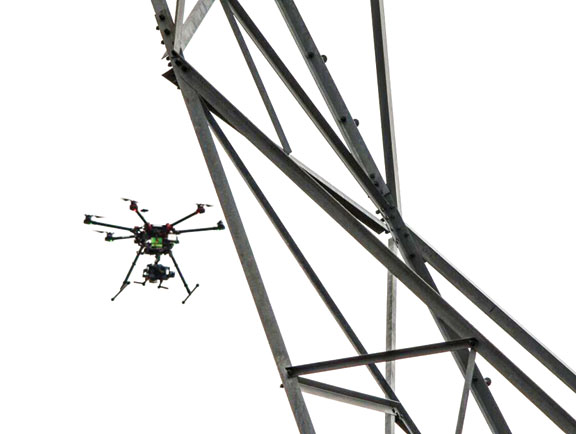Twenty-seventeen will be the year when the tribes’ unmanned aerial systems program really takes off.
January and February in particular will see milestones in the UAS program.
In January, Warm Springs Ventures will coordinate a flight demonstration for the Bonneville Power Administration. The BPA demonstration will be at the de-energized transmission line on the reservation.
Ventures’ partner Aerial Rigging Systems will fly their EZ Rig Drone, and demonstrate their power line rigging system. The business potential for this use of drones is large, as the market covers all power lines in the U.S.
Then in February, Ventures is planning a grand opening of the UAS Innovation Center at Kah-Nee-Ta. And later in the month, Ventures will host a Drone Public Safety Conference at the resort.
Police, fire and search and rescue agencies from around the state are planning to attend. A drone public safety expert from FireWhat? Inc. will be the keynote speaker.
FireWhat? is a geographic information systems and technology company, mapping emergency incidents and creating technologies to track responders and assets in and out of the field.
As an example of the use of drones in fighting wildfires: A drone can determine the hot spot location or locations of a fire, without putting anyone’s safety in jeopardy.
The Warm Springs UAS program—a Ventures and Tribal Council economic development program—is entering its third year. The FAA approved the reservation as a test area in December 2014.
Ventures then sought state economic development grant funding, which is paying for the Kah-Nee-Ta project, including the installation of fiber optic cable to the resort.
Developing the UAS Innovation Center included some challenges, because the center is unique in the nation, said Aurolyn Stwyer, Ventures business and marketing director.
Equipment at the center will include, for instance, a dozen drone flight simulation computers. A drone expert at Central Oregon Community College was helpful in determining the best equipment for the center, Ms. Stwyer said.
When in operation, the center will include FAA certified pilots who will provide the training.
Jobs potential
There are four areas with job potential for the tribes with the UAS program, Aurolyn said. The jobs aspect of the program has been important in obtaining the state funding, she said.
First, the UAS center will need certified observers. They will be in the field when companies and individuals are testing their drones.
A second area of employment will be in drone manufacturing, Aurolyn said. Ventures is planning to build a manufacturing center at the industrial park, at the vacant site near the Ventures offices.
A third area of employment: The training center itself will need staff. And fourth: Ventures is looking at developing a drone park at Kah-Nee-Ta.
The park would include a large net-enclosed area where people can learn to fly drones. Because of the net, the site would be considered an in-door facility, with fewer certification restrictions. Hobby enthusiasts would find it ideal.
The drone park would also be unique. Ventures is planning a feasibility study for the project. When in operation, the park would create jobs such as flight trainers.
New regulations
In 2016, the FAA released new regulations that change the process by which a person can become a certified commercial drone pilot.
These changes made it easier to acquire a commercial UAS license, and this development was a major benefit to the tribes.
Rather than having to acquire an actual pilot’s license, which is expensive and can take a year and, the commercial drone certification process can happen in a matter of days or weeks, and is much less expensive. This creates greater demand for use of the upcoming Innovation Center at Kah-Nee-Ta.
Growth industry
The FAA estimates that 20,000 drones are currently registered for commercial use. The 2016 FAA regulations are expected to produce a 30-fold increase in a matter of months.
The FAA forecasts there could be as many 600,000 unmanned aircraft used commercially during the first year following the recent adoption of the new regulations.


